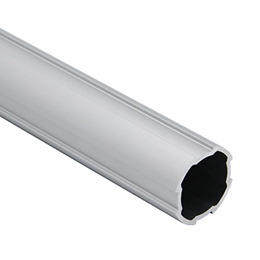Diferencia entre oxidación anódica dura y anodización blanca
El objetivo principal del recubrimiento de oxidación anódica dura es mejorar las propiedades del aluminio y las aleaciones de aluminio.. Incluyendo resistencia a la corrosión, resistencia al desgaste, solidez al clima, aislamiento, y adsorción. Es adecuado para extruir aleaciones de aluminio y fundir piezas de aleaciones de aluminio..
Este artículo presenta la serie.:
1-Characteristics of Hard Anodic Oxidation Coating
2-Working Principle of Hard Anodic Oxidation
3-Diferencia entre oxidación anódica dura y anodización blanca
4-Several Classifications for Hard Anodic Oxidation Treatment of Aluminium Profiles
5-Precautions for Hard Anodic Oxidation Staining of Aluminium Profiles
Diferencia entre oxidación anódica dura y anodización blanca
Advantages of hard anodic oxidation
1-The surface hardness of aluminum alloy after hard anodic oxidation can reach up to HV500.
2-The oxide film thickness is 25-250μm.
3-Strong adhesion. According to the oxidation film characteristics generated by hard oxidation, 50% of the resulting oxide film permeates into aluminum, y 50% attaches to the surface of the aluminum alloy (Inner and outer two-way growth).
4-Good insulation: the breakdown voltage can reach 2000V (perfect sealing hole).
5-Good wear resistance: for aluminium alloy containing less than 2% copper, its maximum wear index is 3.5mg/1000 RPM. All other alloy wear indices should not exceed 1.5mg/1000 RPM.
6-Non-toxic: oxidation film and electrochemical process used to produce anodic oxide film should be harmless to human body.
So many industries in order to reduce the weight of the product, mechanical processing convenience, environmental protection requirements, such as low at present, some parts of products by the hard anodized aluminum alloy instead of stainless steel, hard chrome plating, etc.
Diferencia entre oxidación anódica dura y anodización blanca
The oxide film of hard anodic oxidation is 50% permeated into aluminium alloy, y 50% adhered to the surface of aluminium alloy. So the external dimension of the product becomes bigger and the inner hole becomes smaller after hard anodizing.
Differences in operating conditions
1-The temperature is different. White anodizing is at 18 a 22 ℃ or so, sometimes can reach 30 ℃. High temperature may cause powder or cracks; Hard anodized generally at below 5 ℃. Relatively speaking, the lower the temperature, the harder it is.
2-Electrolyte Concentration difference: Solution concentration of White anodizing is about 20%, but hard anodizing’s is usually at 15% or lower.
Current and voltage differences: White anodizing current density is generally 1-1.5a /dm2 and voltage is no more than 18V; But hard anodizing: current density is 1.5-5a /dm2 and voltage sometimes as high as 120V.
Differences in film performance
1-Film thickness: White anodizing film thickness is relatively thin; hard anodizing film layer is generally more than 15 μm.
Surface state: White anodizing surface is smooth, while the hard anodizing surface is rough (micro, related to the surface roughness of the matrix).
2-The porosity is different: White anodizing porosity is high and hard anodizing’s is low.
3-White anodizing is basically transparent film, and hard anodizing is opaque because of its thick film.
4-Applicable for different occasions: White anodizing is suitable for decoration, while hard anodizing is mainly used for wear resistance and power resistance.
Victory Aluminium es un fabricante profesional de productos de aluminio.,por favor contáctenos en la página de inicio:www.vametalsupply.com , Email:sales@vametalsupply.com


 Con apoyo de
Con apoyo de 